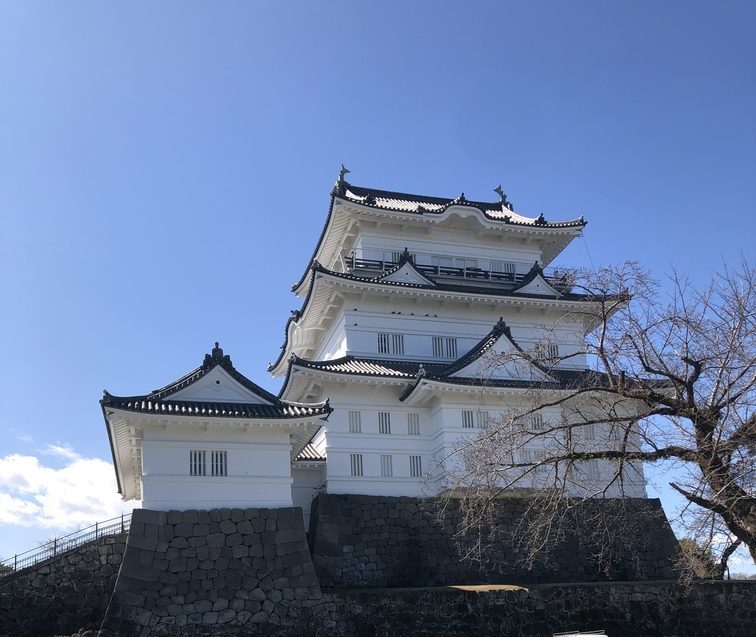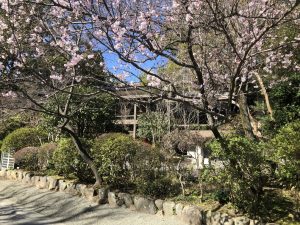Apr 23, 2021
Let’s Tour: Odawara
Once again, it’s time to introduce a little-known section of the Greater Tokyo area that probably isn’t too well known about, perfect for a day trip outside the hustle and bustle of central Tokyo. So let’s hop on the Romance Car and head to the other end of the Odawara Railway and see what’s in Odawara!
Little Inn on the Prairie…
Surprisingly, Odawara historically is just as important a place as Kamakura was; in fact, the two towns represented the two factions that were constantly squabbling over resources on either side of what is now Kanagawa Prefecture during the Warring States Period. That kinda came to a close once the Tokugawa Shogunate came into power and turned Odawara into an important stop on the Old Tokaido Road linking Kyoto to old Edo and renamed it Odawara-Juku, with the last part meaning “inn” since this was usually within a day’s horse ride from Yokohama and Edo. Modern times moved the Tokaido onto the railroad bypassing Odawara, and Yokohama became the regional center of commerce in the late 19th century. This meant the town’s population sharply declined until 1937 saw the opening of new tunnels switching the JNR (now JR) Tokaido Mainline back through the middle of Odawara. Less than 30 years later, the Shinkansen high-speed rail line also opened a station here, and a new era of being an exurban bedroom community of Tokyo and Yokohama began.
Gateway to Fuji, Anchor of Shonan
Located in southwestern Kanagawa Prefecture and about 80kms from Shinjuku in Tokyo, Odawara is at the end of the Shonan Beach City zone and is also the gateway to the Hakone ski and nature reserve area as well as a good way to head to Mt. Fuji. Even if you’re headed to these destinations, Odawara should definitely bookend your journey, if only for its convenience. The station itself is currently being overhauled and has a decent-sized shopping mall grafted onto its southern ocean-facing exit into the main downtown area called Minaka Odawara and includes an up-to-date rendition of an old Taisho/Showa era collection of michi-no-eki at the street level. It’s just a facade, and the inside is very much appropriate for 2021. A tourist information center is also located on the main gate level of the station and should be your first stop to pick up maps and various guidebooks in the language of your choice; there are also discount coupons and tickets handed out here at various times of the year as well!
On the way to the castle
Heading out of the East exit of Odawara Station, head south on the street immediately in front of there, passing by the new Minika shops along the way. Eventually, you’ll reach a junction with an elementary school in front of you; turn left here, and as you walk along, there will be historical markers every so often. These mark the former outer walls and gates of the Odawara Castle complex. You can see some of the original stone “boulders” used as masonry, along with a very well-manicured stream that was once part of the castle’s moat. Sections of it are now used as planting beds for different varieties of flowers. Also, note that many of the walkways and streets that form the castle’s perimeter are lined with Japanese cherry trees. The area is usually a prime spot for hanami cherry blossom parties during the early spring blooming season. (however, due to the ongoing COVID-19 situation, many events are still canceled– always check the Tourist Information Center for updated information.)
Castle Grounds
Rounding the bend and crossing over the moat over wooden bridges and into the main gate, you start to notice the serious undertaking that happens to create all these old structures. Though a large part of Odawara Castle is a recreation of what stood there, many of the construction techniques used in the recreated outer walls, and the castle itself, were done using materials and tools from that time period. Also, for seemingly no related reason, there is a sizeable enclosure housing a family of Japanese Macaque monkeys sitting prominently for all to crowd around and watch them “monkey around” (sorry-not-sorry). If you’re fortunate, you can spot their wild cousins living in the mountainsides all over Japan and sometimes can be seen bathing in hot springs.
In the neighborhood…
Unfortunately, the pandemic caused the tours to the actual castle itself to be canceled. Still, according to the guide, the caretakers are using the downtime to rehabilitate the interior, so you now have something to look forward to when the time comes! 😉 But there’s plenty of attractions that are still open for business in the area around the castle:
- Kodomo Yuenchi – a children’s playground on the verge of being a small amusement park, complete with a rideable model railroad!
- Hotoku Ninomiya Shrine fulfills the requisite “shrine next to Japanese historical site” duty. It is a very picturesque place to find a respite after all the walking you’ve done so far. But you’ll also notice many school kids and their parents coming to pray here for reasons that are explained in the next point…
- Hotoku Museum is the place to go to find out about Ninomuya Kinjirou, who is the namesake of the aforementioned shrine and a very famous philosopher and self-taught farmer whose land management techniques staved off famine in the early 19th Century. Because he was quite frequently seen walking with a book in his hand, he is sometimes called the unofficial “God of Studying.”
 Down the Shore
Down the Shore
Since Odawara sits on the coast of Sagami Bay and the sea can easily be spotted from the plateau the Castle sits on, my wife and I decided to see if there was some local beach area in Odawara. Japan being an island archipelago, doesn’t offer as much in the way of “resort level sandy beach areas” as you’d think; much of the shoreline is rocky. But the Shonan area in Kanagawa is known for its beachfront area, and Odawara’s public beach area is up to the task. Miyuki-no-hama Beach is a short 15-minute walk due east from both station and castle. We could only see it on a warmish early spring afternoon in March, but I’m told it’s not a bad place to picnic and take a dip in the sea during the summer months either.
 Street Food
Street Food
Kamaboko Dori loosely translates to “street where one can chow down” and has been that way since Odawara was a stop on the Tokaido road between Osaka and old Edo (now Tokyo). Only a few shops remain, but they are all family-owned and offer a glimpse not only into the past but present day-to-day “mom & pop store” Japan. Most of the eateries deal in seafood (we are on the shore after all), and we chose to scarf down some fish croquette pita sandwiches and wash it all down with some locally produced plum wine spritzers. Just the thing to help us gather the strength needed to walk back to the station
Getting There
Odawara is served by JR East’s Tokaido and Shonan-Shinjuku Lines [JS] [JT], Odakyu’s Odawara Line [OH47], and JR Central’s Tokaido Shinkansen bullet train all at Odawara Station. This is also the gateway for Hakone and the Fuji Five Lakes area via the Hakone Tozan Railway and bus service to Mt. Fuji itself.
📸 Images by Jason L Gatewood
3 comments so far
SvkPosted on11:33 pm - May 4, 2021
Thank you for this interesting article.
If you would have some spare time, Odawara is also a beautiful city for walking.
See this link:
https://jdm4all.com/odawara-walking-routes/












About the author